
INTRODUCTION:
Mishaps can happen anywhere at any time, and they are unpredictable. However, one should keep themselves prepared to fight any adversity. Therefore, every office and house needs a fire extinguisher. And, this fire extinguisher must be accessible at all times.
Nevertheless, when you try to purchase one, you will come across different types of fire extinguishers. You should know that not every extinguisher is suitable to tackle all the different kinds of fires. As every fire extinguisher caters to different fire classes, it can be confusing and troublesome to pick the right one.
At first, you need to understand the different classes of fire ignited by various substances. It will then become easier to understand the types of fire extinguishers and their uses.
Classifications of Fire
There are six classifications of fire:
- Class A: This is the fire that involves combustible solid material like wood, paper, or fabrics.
- Class B: This fire involves highly flammable liquids like petrol, oil, diesel, or paraffin.
- Class C: The fire that involves gases like helium, methane, and butane.
- Class D: This is the fire that involves metals, e.g., magnesium or aluminum.
- Class E, or more prominently known by the electric spark symbol: Electrical equipment causes it.
- Class F: This fire involves cooking oil or fats.
As you are now aware of the different classes of fire, note that you require different fire extinguishers to douse each fire class. For example, you can easily set out a class A or class B fire with water, but you cannot put out an electric-induced fire in the same way.
Fire Extinguishers
Let’s explore the various types of fire extinguishers and know their uses.
1. Foam-Based Extinguishers
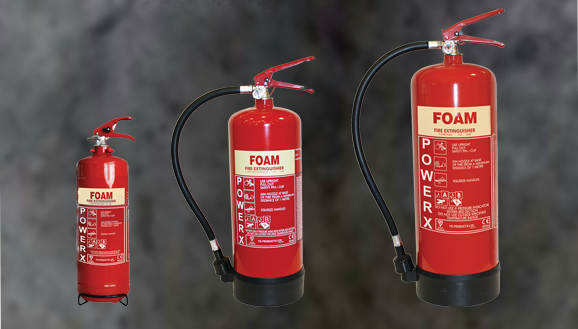
These types of extinguishers douse fires by eliminating heat. The elements in the foam separate the oxygen that is in the fire from the other elements. A soon as you spray the foam over the fire, it forms like a covering over it. This helps in putting out the fire quickly and efficiently.
Also, as these types of extinguishers have water in them, they cool down the fire. However, foam extinguishers prove to be effective for class A and class B fires. This extinguisher will not be suitable for other classes of fire.
2. Water Spray Extinguisher

Water spray or mist extinguishers consists of water molecules that douse the fire. As these water molecules release, they decrease the oxygen levels in the air. Water acts as a cooling agent, reduces the temperature, and this extinguishes the fire quickly.
The unique thing about water spray extinguishers is that the water present is deionized. Deionized water does not have minerals in it; this water does not conduct electricity. Therefore, you can use it to extinguish electric fires. You can use this extinguisher for A, B, C, and E class fires.
3. Dry Powder Extinguisher
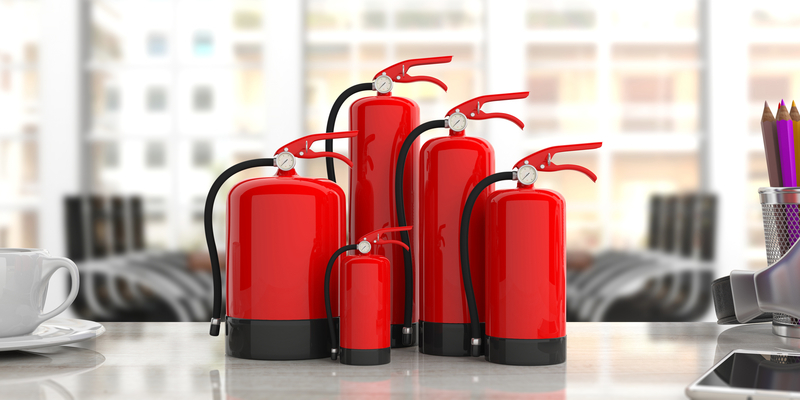
These extinguishers consist of a special kind of dry powder. The powder, when you spread it, forms a crust that sets out the fire. This type of extinguisher is best for type A, B, and C fires. Therefore, people also know these as ABC extinguishers. However, you can also use some special dry powder extinguishers for class D fires.
You can use these for fires caused by wood, paper, textile, flammable liquids, and even electrical equipment below 1000 volt, but not greater than that. However, you should avoid using the dry powder in compact places as someone can easily inhale it, and it is harmful.
4. Dry Chemical Extinguishers
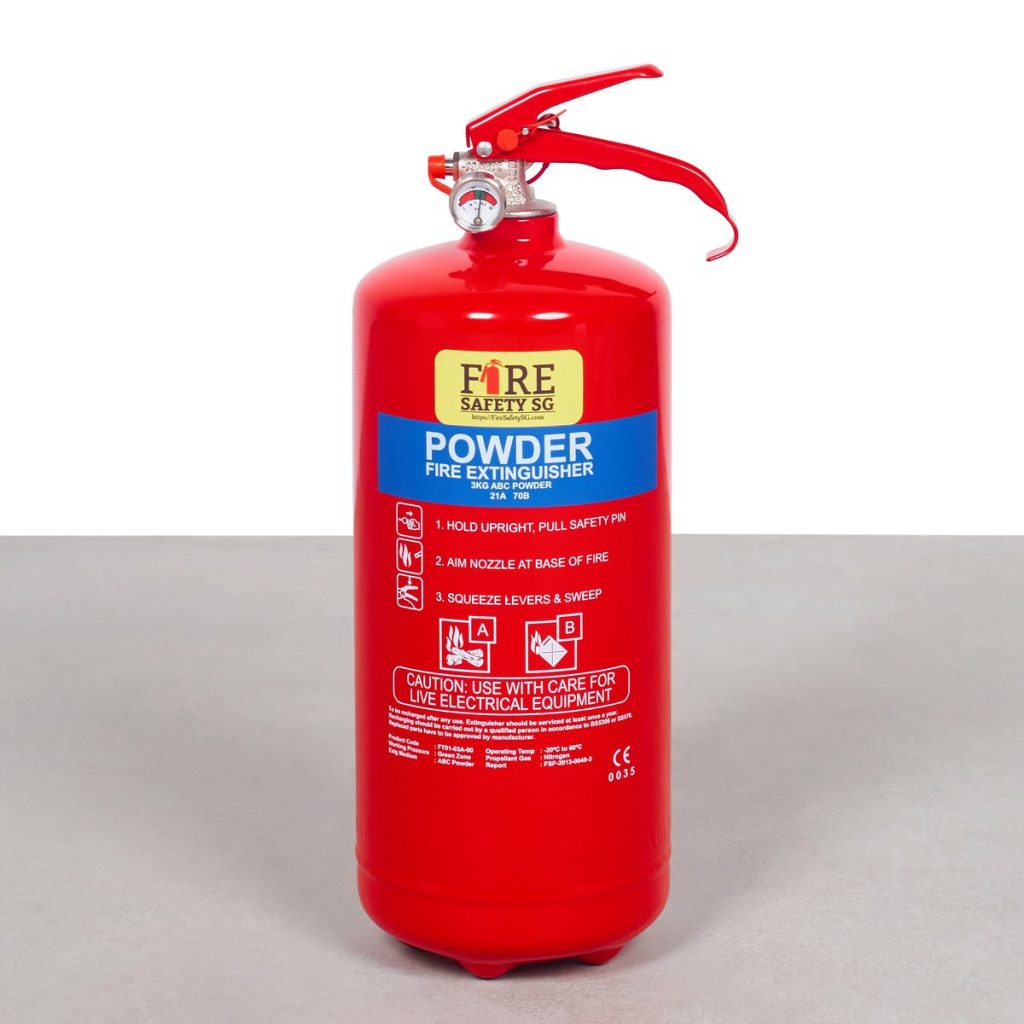
It is one of the most commonly used fire extinguishers. This dry chemical extinguisher douses fire by breaking the fire triangle. It usually has sodium bicarbonate or potassium bicarbonate. These chemicals blanket and smother the fire.
Dry chemical extinguishers are effective for A, B, and C classes of fire. However, you cannot use some of the regular dry chemical extinguishers for class A fires.
5. Wet Chemical Extinguishers
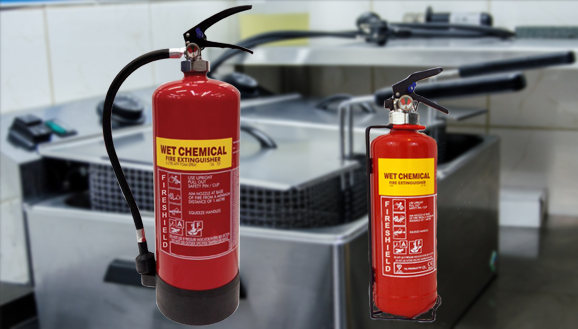
This extinguishes the fire through a potassium solution. The solution first cools the fire by lowering the temperature. This also prevents the fire from spreading. Then, the potassium solution reacts with the oil and fat and serves as a wall between the fuel and oxygen so that the fire may halt.
You can use wet chemical extinguishers for class F fires ignited by cooking oils and fat. You can usually find this type of extinguisher in commercial kitchens like restaurants and eateries.
6. Carbon Dioxide Extinguishers
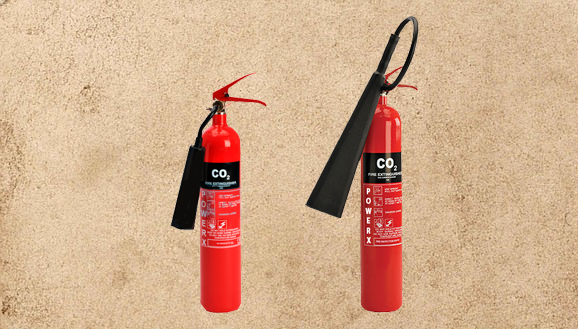
This is filled with pressurized non-flammable carbon dioxide. This type of extinguisher puts out the fire by eliminating the oxygen from the fire triangle at first. Then, it also removes the heat through the cold expulsion.
Carbon dioxide extinguishers are useful for class B and C fires only. They do not work well on class A fires. This is because these extinguishers are not very effective in displacing the oxygen element in the fire.
7. Clean Agent Extinguisher
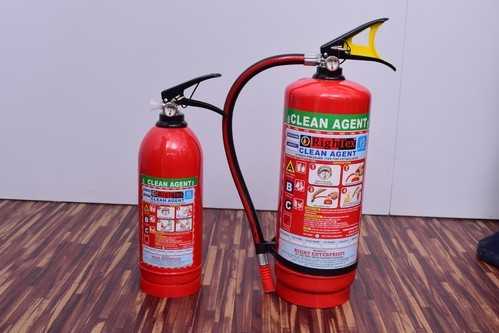
These extinguishers are also known as Halogenated Extinguishers. These include halon, which is unreactive chemical compounds. These compounds help in putting out the fire by interfering with the chemical reaction in the fire triangle.
Clean agent extinguishers are effective for class A, B, and C fires. These are also safe to use for class E or electrical equipment because these are non-conductive.
Final Words
It is vital to have this information because safety comes first. You can now purchase the right type of fire extinguisher, depending on the purpose and place where you want to place it. If you have already purchased one, you can inspect it to ensure that you have the right extinguisher that you might need in case of an emergency. If you are keeping extinguishers in your office, you might want to keep different kinds of extinguishers for all the various areas inside the premises.
Nevertheless, besides placing the right extinguisher, it is also necessary to know how to use it when need be. Therefore, as crucial as it is to have the right equipment, it is also essential to understand how to use it.
